In order for companies to stand out and experience long-term success, they must learn how to control and optimize their business processes. In order to understand and map out their processes, companies usually conduct workshops with business teams and interviews with key players. Unfortunately, these methods are limited since they are based on incomplete and subjective information. In recent years, automated process discovery methods have gradually become known as “process mining.” This new tool offers a new data-driven approach that provides a complete and objective overview of how business processes are handled.
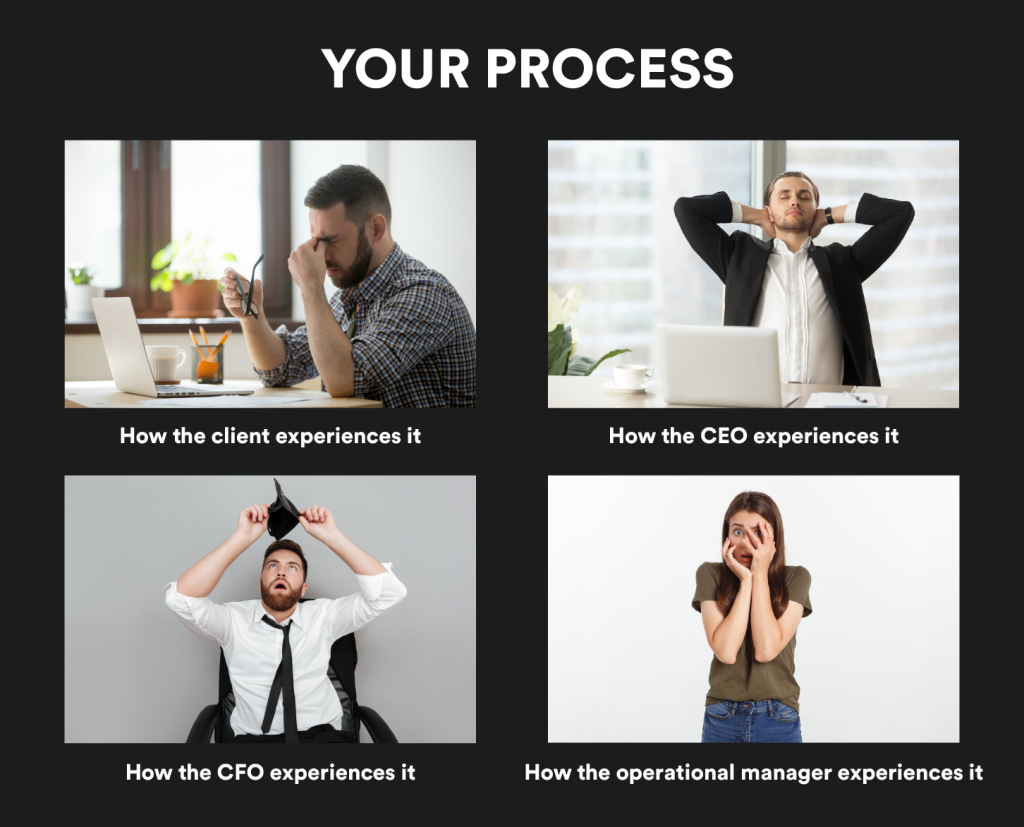
In this article, you’ll discover how process mining works and get the answers to most of your questions.
Which problems does process mining address?
Who hasn’t experienced a delay in the delivery of an online order? Or been on the line with customer service representatives for hours trying to fix a problem, being tossed around like a ping-pong ball from one department to the next? These types of situations also occur in the internal processes of companies, such as when a team gets stuck because its request for equipment is not processed in time.
When it comes to issues such as those described above, companies must ask themselves some difficult questions. Do you really know how your organization works? How do your main processes work, in particular those related to customer orders (“order-to-cash“), procurement (“procure-to-pay“), and incident management?
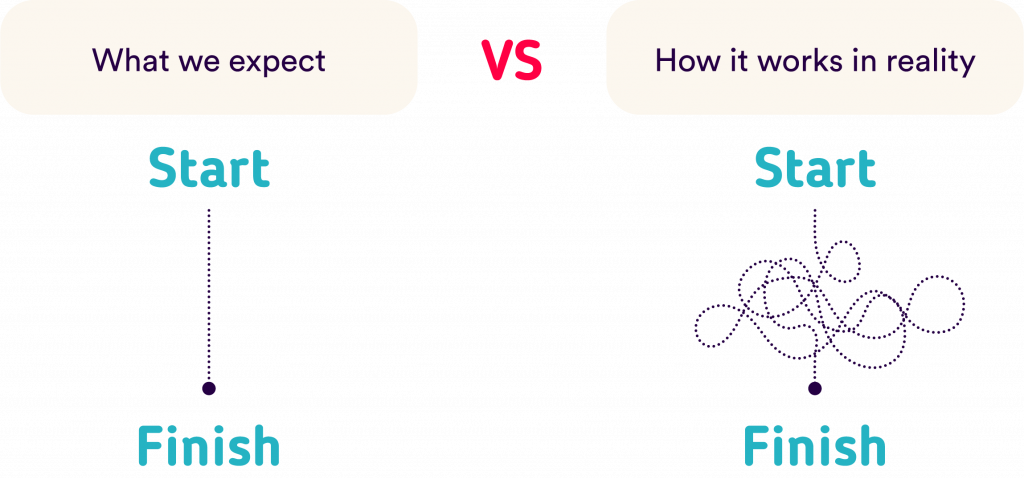
Usually, the executive management has a biased and idealized view of what really happens in its departments. Despite procedural documents and regular audits, it is difficult for organizations to control the way their processes are executed in practice.
The traditional method for understanding and optimizing a process is based on gathering information through interviews and workshops with business specialists to understand their daily work and objectives, and to subsequently create a flowchart of the process. However, such an approach can provide a subjective view on the way teams or individual employees execute the process. The more people are involved in the process, the more time-consuming and costly it becomes to gather this knowledge. In any case, this approach only offers a perspective at the time of the analysis: it does not allow for follow-up to evaluate the evolution of the process.
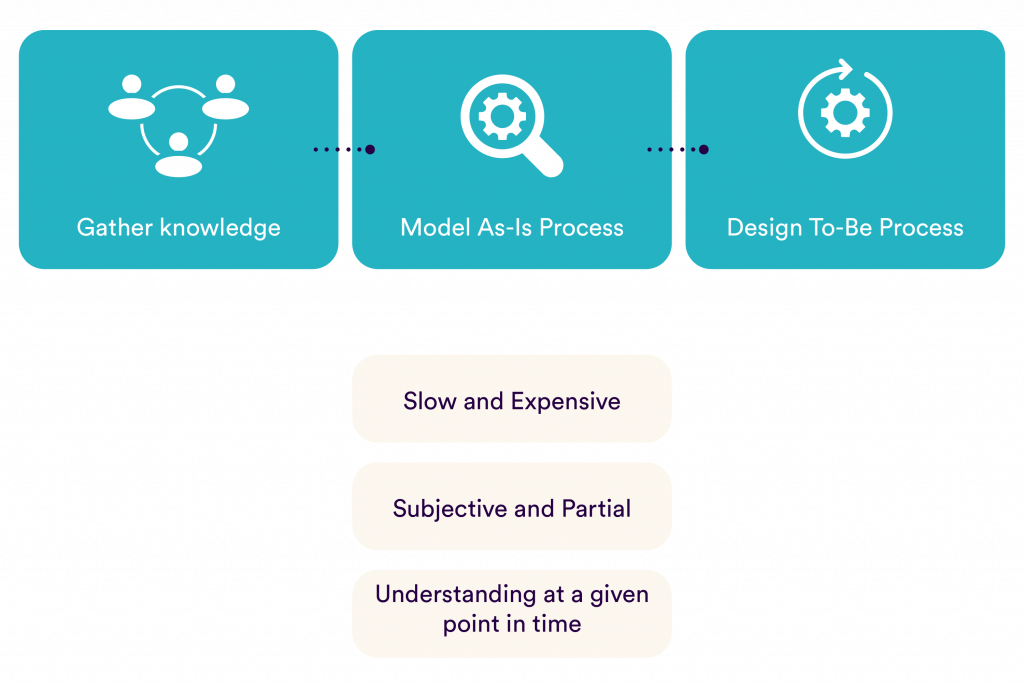
This is a method that eliminates these problems by providing a complete and unbiased view of your main business processes.
Process Mining: A brief overview
Process mining uses the data generated by the processes in your information system to reconstruct the way processes are really handled.
Every time an employee performs an action in a system (e.g., acknowledging the receipt of an order in SalesForce, validating a purchase request in SAP, changing the status of an incident in ServiceNow), the action leaves behind a piece of data, a timestamped “digital footprint.” Each fingerprint consists of 3 pieces of information:
- ID: a unique identifier that makes it possible to track an action on the information system (e.g., the order number)
- Timestamp: the date and time of the action
- Activity: the step of the process completed by the user (e.g., acceptance of the order, payment of the invoice, etc.)
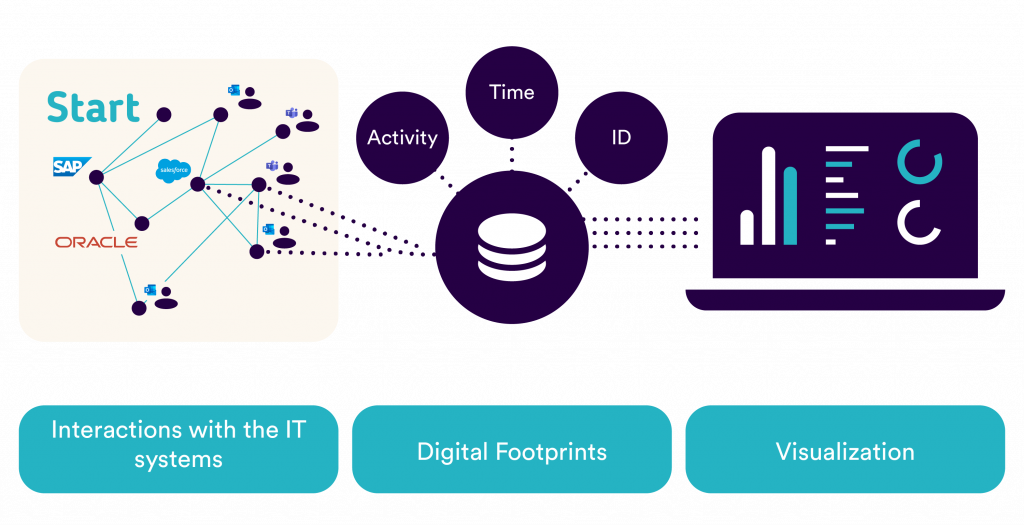
Process mining uses these events to reconstruct how (when, by whom, etc.) the steps in a process instance or “case” (order, purchase, incident, etc.) really happened.
Below, an accounts receivable process is recreated (from the creation to the archiving of the invoices) by Celonis, one of the leading tools on the market.
Complementary techniques
There are 3 main process mining techniques:
- Process discovery: the transformation of footprints into a process model. This process model contains all the process-related activities performed by users on the systems.

- Conformance checking: the comparison between a hypothetical process model and the process model created during process discovery. The objective here is to highlight discrepancies between the hypothetical model (“how my process is supposed to be”) and the actual model (“how my process is really executed”).

- Enhancement: the analysis of the hypothetical model and the actual model based on digital footprints to come up with areas of improvement (bottlenecks, unexpected steps, loops, etc.).

When and how to use process mining?
Process mining use cases are wide and varied, especially as data continues to “explode” in organizations and processes become more and more complex with an increasing number of systems and applications.
Since the heart of process mining is data, the technique is particularly useful when there is too much data to be processed by traditional analysis methods. Process mining is therefore mainly used for the primary processes of organizations, i.e., those processes that involve a variety of different departments and critical systems (ERP, CRM, central business applications, etc.). Here are some typical use cases.
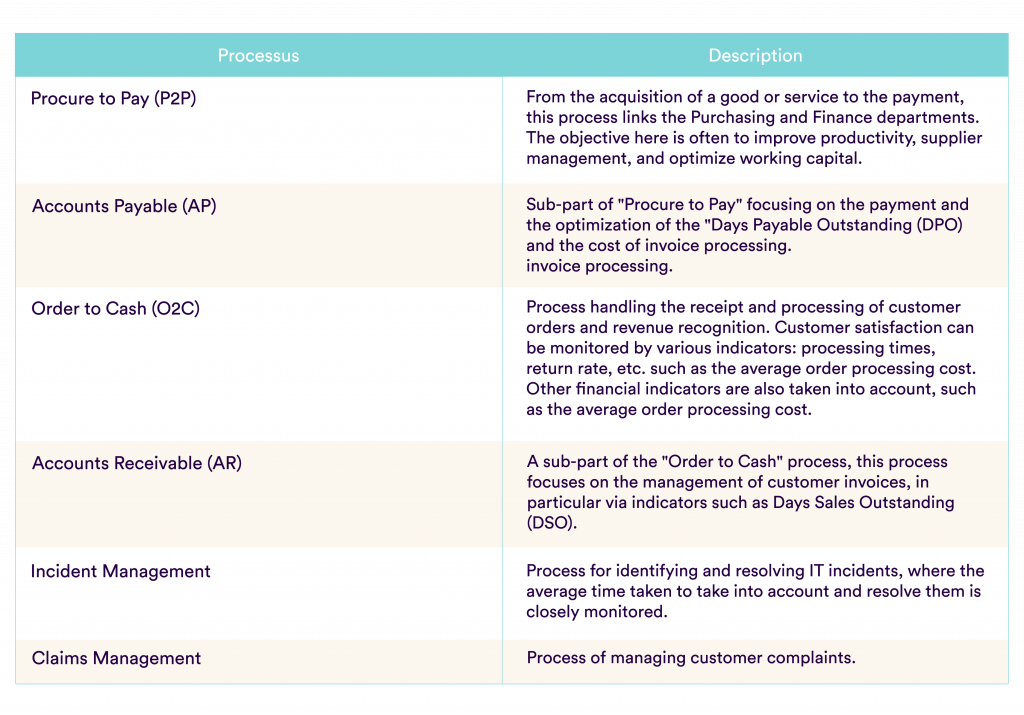
What kind of benefits can you expect to get from process mining?
1. Understand processes
This is the first benefit, and the one most associated with process mining technology. Thanks to the automated mapping of processes, process mining helps you understand your processes better. It reveals the number of steps, their order of completion, the time spent on each step, anomalies, etc.
You can also perform in-depth analyses by using filters:
- See all the instances with a certain step or that include 2 consecutive steps (e.g., go back in the process)
- See the instances associated with metadata: the type of product purchased or sold, the branch that handled the request, the supplier, the customer
- Filter over a period of time
2. Ensure process compliance
Process mining helps identify anomalies during the execution of processes:
- Steps that occur when they shouldn’t
- The absence of certain steps in an instance (e.g., managerial validation or a “four-eyes” check)
- The order of certain activities
- Excessive delays between activities according to process-related SLAs
3. Monitor processes
The process mining platform is made available to business teams, who can track the progress of new instances thanks to the self-service solution. Key performance indicators (KPIs) are defined with the business specialists and displayed on the process dashboard.
4. Improve processes
Once the process is better understood and controlled, it becomes easier to identify the areas of improvement for optimizing the process, reducing costs, and increasing satisfaction of stakeholders (customer, supplier, and employee).
Organizational changes can be made, such as adding new resources, modifying internal procedures and rules, etc. Process mining platforms can also automate certain actions. When an instance passes through a specific activity, in a certain context, an action is immediately triggered, e.g., in the ERP or on the automation platform: the launch of a workflow (BPM) or a robot (RPA).
In any case, all changes can be viewed and analyzed on the process dashboard.
5. Predict how processes will evolve
Process mining platforms also come with simulation features that help identify and anticipate bottlenecks and the impact of changes in loads. The goal is to ensure that (the right) resources are available in the medium term to cope with higher workloads.
Conclusion
In this article, we presented the principles of process mining: the problems it addresses, and the benefits it is associated with.
In future articles, we’ll present the process mining platforms of our main partners on the market (Celonis and UiPath), and our project approach for implementing process mining technology in companies.
Sources
- Process Mining: A recent framework for extracting a model from event logs, Luis Santos, Juin 2017
- Kalenkova, A. A., Aalst, van der, W. M. P., Lomazova, I. A., & Rubin, V. A. (2015). Process mining using BPMN: relating event logs and process models. (BPM reports; Vol. 1501). BPMcenter. Org.
- Mapping the Patient’s Journey in Healthcare through Process Mining, Michael Arias from International Journal of Environmental Research and Public Health
- http://www.processmining.org/
- https://www.livejourney.com/fr









